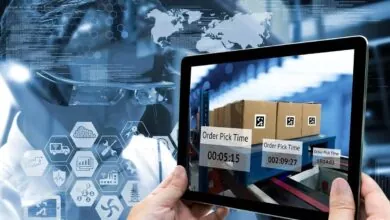Understanding Product Lifecycle Management: A Guide

In today’s fast-paced business world, managing a product from inception to retirement is an intricate process. Effective product lifecycle management can mean the difference between market success and costly inefficiencies. It encompasses everything from design, development, and manufacturing to service and disposal. This comprehensive guide delves into the intricacies of the product lifecycle. Keep reading to learn more.
The Concept of Product Lifecycle Management Explained
Product Lifecycle Management (PLM) is a strategic approach to managing the entire lifecycle of a product. It begins with the initial concept or idea and spans through to design, production, and finally to the phase-out and disposal of the product. This methodology not only streamlines the product development process but also ensures consistency and quality throughout its lifespan.
At its core, PLM integrates people, processes, and data across the organizational ecosystem. This interconnectedness allows for seamless collaboration between different departments, such as engineering, manufacturing, sales, and marketing. By breaking down silos, teams can work cohesively towards shared goals, increasing efficiency and reducing time to market.
Modern PLM systems are often underpinned by digital infrastructure, enabling real-time data sharing and analytics. In this environment, decision-makers can leverage up-to-date information to make informed choices, mitigate risks, and capitalize on market opportunities. Essentially, PLM acts as a centralized repository that captures the full gamut of product-related information.
As businesses increasingly rely on technology for competitive advantage, the importance of PLM continues to grow. This concept helps companies remain adaptable in the face of changing customer demands, emerging trends, and innovation pressures.
Essential Components of a Robust PLM System
The architecture of a robust PLM system comprises several key components that work in tandem to deliver comprehensive functionality. First and foremost is a centralized database that stores all product information, acting as a single source of truth for the organization. This database is essential for managing complex product information, including designs, materials, and technical specifications.
Another vital component is the software that facilitates the management of this information. Reliable PLM software is characterized by its ability to integrate with various tools and platforms used throughout the product development process. This includes CAD software, supply chain management systems, and enterprise resource planning (ERP) solutions.
Workflow management is also an integral feature of a PLM system. It streamlines processes by automating routine tasks and defining a clear oversight for project milestones and deliverables. By providing a structured approach to workflow, PLM systems ensure that projects remain on track and stakeholders are kept in the loop regarding progress and any potential issues.
Lastly, user interfaces and accessibility are crucial for the effectiveness of PLM systems. Teams across the organization must be able to access and interpret product data easily. Intuitive user interfaces encourage the adoption and proper use of the system, resulting in higher productivity and better collaboration among cross-functional teams.
Analyzing the Benefits of Implementing PLM Software
The implementation of PLM software brings a multitude of benefits to organizations striving to improve their product management strategies. Increased efficiency is one of the most significant advantages, allowing companies to speed up development cycles and reduce time-to-market for new products. This acceleration is made possible by streamlined workflows and improved communication across departments.
With a PLM system in place, companies also achieve better compliance and quality control throughout the product lifecycle. Regulatory requirements can be managed more effectively, ensuring products meet industry standards and customer expectations. This vigilance in compliance further helps to minimize the risk of costly recalls or reputation damage.
Cost savings are another key benefit, as PLM helps identify areas where resources can be optimized. By eliminating redundancies and enhancing resource allocation, businesses can significantly reduce expenses associated with product development and support. These financial savings can then be reinvested into innovation and growth initiatives.
Furthermore, PLM software enables a more responsive approach to market demands. By providing actionable insights derived from product data, companies can more swiftly adapt to changes in consumer preferences or technological advancements. This agility ensures that organizations can maintain a competitive edge in their respective markets.
Overall, the strategic implementation of PLM tools and methodologies can elevate a company’s operational efficiency and adaptability. Through the conscientious application of PLM principles, organizations can navigate market complexities and emerge more robust, innovative, and customer-focused.
Read more here for more information.





